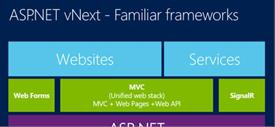World Wide Web- Then and Now
World Wide Web has now become an integral part of our existence. Right from the time, we wake up in the morning until the time we go to the bed; World Wide Web plays a major role in many of our activities- communication, shopping, work, and entertainment.
There are people who start their day by checking the Facebook status on their smartphones. However, it was not the same during the initial years of World Wide Web. It took a lot for Tim Berners-Lee, the founder of World Wide Web, and other major contributors- to give World Wide Web its present identity and an authoritative position. While much has been written on the Arpanet to Internet to World Wide Web over the net, it is the time to get acquainted with what happened after the World Wide Web was finally released as the royalty-free platform that didn’t need any permission.
World Wide Web- in its true sense
In order to ensure that the World Wide Web is not limited to a proprietary product, Tim, along with several other influential figures ensured that the CERN should release the principal code publicly. Anyone would use the code without paying any royalty ever. In April 1993 marked a real, practical revolution in the way the world communicates when CERN finally agreed on the demands. The WWW code was not confined to a specific expert fraternity but was fully accessible to the public and instead of guarding; the people were invited for participating and experimenting with the same.
The global connection
The royalty free distribution of internet and its decentralized approach connected a huge number people to the WWW and by 1995 a whopping 18957 people were using the internet. It was in April the same year when another form of Media - Television - shook hands with the internet. Rox became the first TV series of the world to be distributed through the web.
Increasing the influence
- In 1997, AOL launched the first messenger for MS windows that added to the chat experience. In 1999 the widespread popularity of mobile phones added a new phase in the development of World Wide Web when Japan’s NTT Docomo introduced world first phone that was fully capable for the internet.
- With the launch of Wikipedia in 2001, internet offered a useful resource for educational purpose. Many students relied on Wikipedia for their research projects. The lifting up of various restrictions like citing the information or using the graphical creatives allowed the students and other non-commercial users to use Wikipedia as their preferred source.
- In 2002 Friendster brought a milestone evolution in the social connectivity that was later to be termed as social media. Following the example, several other online networks were developed for specific purposes like LinkedIn, and Skype.
- The Facebook was launched in 2014 that adopted a number of innovative ideas and acquired some of the already running successful social media platforms. That almost eliminated the competitions and boosted the confidence of the Facebook. Today social Medias synonymous with face book.
- Though internet had by now developed into a thriving society it still lacked a major thing - its win currency. The response came in the form of Bitcoins. Also known as cryptocurrency it can be called the digital currency used by the internet.
- By 2017 the total number of website will be 1 Billion +

Related Posts
Blackmail is a serious crime that can cause immense stress and fear.
In today's data-driven world, databases form the backbone of countless applications and systems that power businesses across industries.
It’s no longer a hidden fact that social media platforms like Facebook affect the mental health of users.
Relocating an IT company is a significant endeavor that involves careful planning, coordination, and execution.
Today maintaining office security has become an important concern for businesses of all sizes.
A registered office address is a fundamental requirement for any business entity, whether it’s a corporation, limited liability company (LLC), or partnership.













Comments
comments powered by Disqus